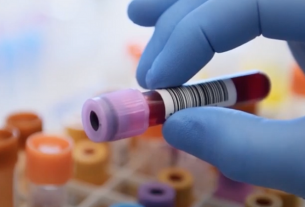In Mexico, fear and the fear of pain are the main obstacles to submitting for mastography.
In the context of Breast Cancer Awareness Month, which is celebrated in Mexico The main reasons that women don’t go to the mastography include the fear of being aware they could be suffering from breast cancer and being apprehensive that the procedure is painful.
This is shown by the results of the study Factors associated with the use of mastography in a resource-limited environment, published in 2018 and developed with qualitative and quantitative methodology by researchers from the National Institutes of Public Health (INSP) and Cancerology (INCan) of the Secretariat of Health, together with other departments worldwide.
The director of cardiovascular diseases, diabetes, mellitus, and cancer at INSP, Gabriela Torres Mejia, detailed that the goal of the research, which included 455 women between 40 and 69 years old, was to assess the factors that aid or hinder women from undergoing mastography.
In this way, the anxiety of being diagnosed with cancer as well as the notion that mastography is painful were the major obstacles in this research.
To prevent discomfort during the procedure, Gabriela Torres recommended that the mastography be done on the 10th day after the menstrual cycles or 10 days prior to when it begins, at a time when the breasts are more tolerant.
In relation to the anxiety of receiving a diagnosis of breast cancer, doctors encouraged women to join the research because when treatment is initiated in the initial stage of cancer, the likelihood of a cure is extremely high.
He also mentioned the knowledge women have regarding getting mammograms every 2 years between 40 and 69, as well as the fact that they have had a history of taking the cervical cancer screening test known as Papanicolaou, which is a factor in women making the decision to have mammograms.
The women emphasized that social programs offered the chance to gain knowledge about the advantages of mastography in the early detection of breast cancer.
The principal reason for this study was the fact that the reality is that in Latin America, more than 115,000 women suffer from breast cancer each year. from which about 37,000 are diagnosed with cancer due, partly, to the late diagnosis and treatment for the cancer.
The expert stated that in developed nations, the survival rate for five years is greater than 90 percent. In contrast, in developing countries, it ranges between 40 and 60 percent. “The only way to decrease death is to identify and treat the tumor at an early stage and in clinical stage I or II.”
In this study, ten researchers from INSP as well as INCAN from Mexico, in addition to researchers from the World Breast Health Initiative and the Fred Hutchinson Cancer Center from the United States, participated.




